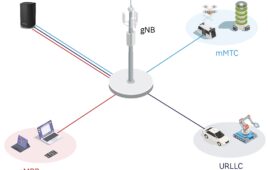The upcoming boom of 5G connectivity will be a global phenomenon, with countries racing to expand their network capacity and carriers pushing out marketing messages about the speeds and overall market value they’ll create with the next generation of connectivity. The drama is compelling, the hype is near deafening, and perhaps it’s all a little premature.
There is absolutely a reason to think the issues with 5G will be overcome in time, and that the next generation of connection will ultimately deliver on its promise. However, in order to get there, five main issues with the way companies and consumers are considering 5G must be addressed.
1. Timing
Many articles are being written about the race to 5G on a global level, comparing nation-by-nation rollout to some sort of cold war or tech dominance issue. It makes for a great story line, but in reality, nearly every developed nation has some sort of roadmap for 5G, and while the politics and regulations across each may vary, the timeframes for launch in each country are quite similar.
Beyond network rollout, there’s also the consideration for devices that will support (and truly utilize) the next generation of wireless. Most manufacturers have established product roadmaps that put 5G-capable phones in the hands of early adopters somewhere near the end of 2019. We’re roughly 14 months away from the early transformative nature of 5G being available at all, which leads to the second challenge of 5G.
2. Consumer Device Use
People are going to use their phones for the next 14 months, and manufacturers are going to continue building new phones with increased screen capacity, extra memory, touch sensors, voice-activated assistants, and much more. Apple’s CEO, Tim Cook, isn’t about to go on hiatus for 14 months after establishing the first trillion dollar valuation in the history of the US.
Assuming the typical “every-other-year” phone upgrade cycle offered by most US carriers remains intact, anyone who buys a phone between now and around October 2019 won’t be on 5G until late 2020 beyond (2 years after purchase). Mass adoption is likely years away and no manufacturers besides Motorola have shown off phone modifications that future-proof today’s devices. 5G adoption won’t be a massive tsunami, it will be a steady stream.
3. Corporate Device Use
It isn’t just consumers who are going to continue using their phones and tablets, businesses are facing increased pressure to provide connectivity. This is being driven by a number of issues, bring your own device (BYOD) chief among them. A decade ago, the major US carriers would incorporate in-building connectivity solutions (repeaters, distributed antennas, etc.) into their enterprise agreements. Providing this hardware was part of the cost of doing business. After all, if a carrier could gain thousands of new enterprise users for its network, then the dollars the carrier spent up front were covered over the long run.
Today, BYOD programs have largely removed the incentive for carriers to purchase in-build solutions. This has not, however, corresponded with declining use in cell data. On the contrary, 80 percent of 4G data is used inside buildings.
4. Carrier Frequency Bands
This creates an additional reason to temper (early) enthusiasm for 5G, since carriers are building 5G networks on frequency bands that don’t travel particularly well, especially through concrete, metal, and other materials used to create buildings. This means that the same IT departments who are currently forced to provide connectivity support for multiple carriers will need to provide support for multiple bands for each carrier in order to offer 5G connectivity. For instance, some carriers have talked about using lower frequencies for voice and text, and higher bands for 5G.
5. Deployment
It isn’t just IT departments that are grappling with supporting multiple bands, many of the carriers are still trying to figure out how they will deploy 5G. Some carriers have discussed creating a 5G experience that offers fixed wireless; that is, users would have a modem in their homes that connects to the 5G band and re-broadcasts throughout the house. It is a similar approach to today’s wired connections except the modem would only have one plug (into the power outlet). While some phones will connect directly to the 5G frequencies, a few carriers aren’t planning to allow for interchange between towers, meaning that phones can’t maintain connection across distances, a feature of LTE that mobile phone users already takes for granted and don’t expect to change. In other words, consumer education on what 5G really is, and what it is not, will be critical, and there has been very little of this so far.
All that said, these challenges are well on their way to being overcome through a number of recent developments in the telecom space.
- Modularity: From in-building solutions like distributed antenna systems (DAS) to basic components in phones, many of OEMs in telecom are building hardware that can be deployed and utilized in a plug-and-play model. For in-building solutions, this is manifesting in DAS solutions that have individual components that can easily be added or substituted. For instance, DAS solutions that have been built in a modular fashion can easily adapt to include the 600 MHz spectrum, which is now being rolled out across the US.
- MIMO (and Massive MIMO): Multiple Input-Multiple Output (MIMO) antennas are being deployed in a number of use cases, ranging from individual phones (Apple is among the early adopters) to modems. This type of antenna, which has multiple prongs that connect to different frequencies, allows individual devices to select the most appropriate band for various use cases, and switches between bands depending on what signal has the least traffic. Massive MIMO uses the same principle on a larger scale. An example would be a regularly crowded hotel lobby, where it’s likely that a large number of customers that represent a diverse set of carriers all want to remain connected. This is a more aggressive BYOD situation where the hotel wants to keep all of its customers connected, but has no control over the devices and carriers its customers might use.
- The Innovation Bands: The CBRS and LAA bands, a pair of unlicensed open frequency bands that are appropriate for LTE (4G), are gaining traction in enterprise settings. The Citizens Broadband Radio Service (CBRS) and the Licensed Assisted Access (LAA) bands are being utilized to keep enterprise employees more connected in the office. They may vary in strengths and abilities, but are functionally similar as a means to increase the density of network connectivity.
While the public facing persona displayed by mobile carriers is mostly positive, there are a number of tangible hurdles that must be overcome to reach mainstream potential for 5G. The ongoing idea of “it’s a race” between carriers and countries seems misguided. However, today’s near contagious enthusiasm isn’t entirely unfounded, as a number of developments for the current telecom environment are paving the way for a smooth transition to 5G. Over the next few years, every country will deploy a network that fundamentally changes the way consumers interact with their devices (mobile, computing, wearable, and other) and with each other. It may just take longer than some consumers have been lead to believe.



